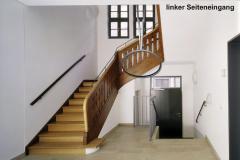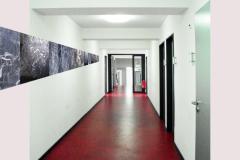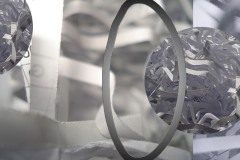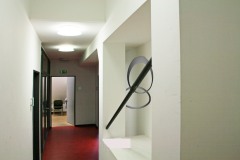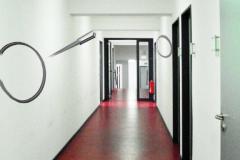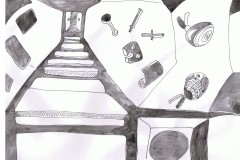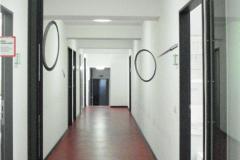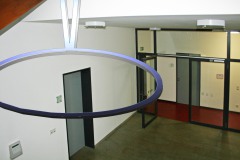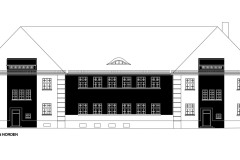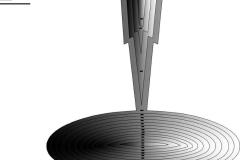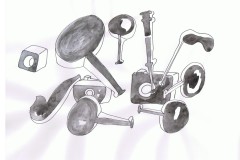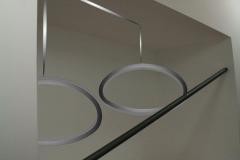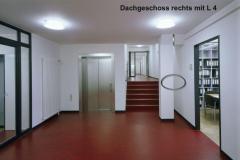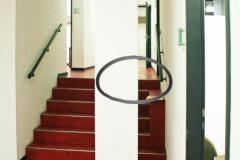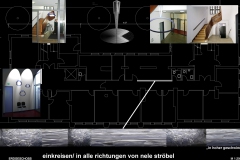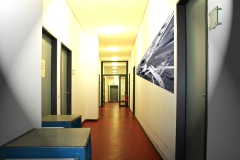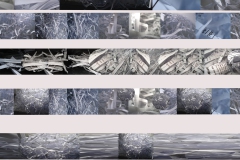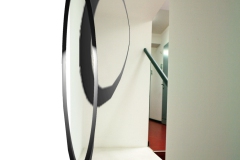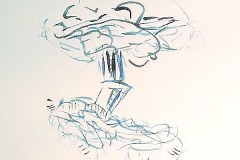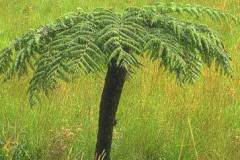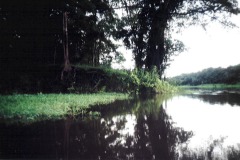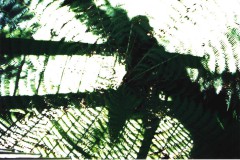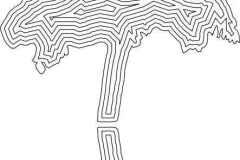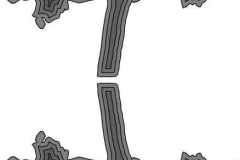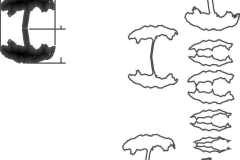
circle / in all directions
circle / in all directions
an art concept for the stairwells and corridors of the public prosecutor’s office at Infanteriestraße 9.
The renovated barracks building is a modern two-hip office facility with naturally lit offices, long hallways and two staircases. The listed wooden railings and the red linoleum flooring that runs through all three levels are striking. The task is to design the long corridors on the three floors, the staircase at the south entrance and the air space in front of the listed wooden railing at the main entrance.
The artistic idea of encircle / in all directions
is the presentation of snapshots of prosecutorial activity using spatial and photographic means. In the medium of art, the static of spaces is dynamized, the activity of their inhabitants transformed into movement.
Investigating in all directions means forming circumstantial chains and pointing out lines of evidence. These are very complex processes between facts and their mediation, mountains of files and actors. Objectivity is struggled for, the law and the reality of life are compared, subsumed, evaluated. The traces of the file trolleys and roller containers can be seen in the corridors of the service building. People hurry, wait and communicate, some room doors are open.
circle / in all directions
consists of three 6 meter long “condensation strips”.
EC: “at high speed
1st floor: “in all directions”.
2.floor: “pattern”
The basis of the three tableau friezes are explorations of paper strips, as they arise for the deconstruction of files (paper shredder) in the office. The content of the files dissolves and becomes a poetic new spatial structure that uses isolated letters and syllables to inspire the viewer’s imagination.
“at high speed”: For the wall piece on the ground floor, I took curly strips of wood-free paper from the shredder, staged them photographically, composed them digitally, and put them into focus and blur. Thus, a 6 m long and 40 cm high picture frieze of accelerated and decelerated mountains of files is created at door level.
“in all directions”: On the 1st floor, the strips of paper left behind by everyday office life are highlighted by oval cutouts. These virtual “magnifying glasses” transport syllables and isolated letters that poetically tell new random stories. “schnittmuster”: On the 2nd floor are photos of paper shapes designed by me, all of which can be traced back to an ordered surface of printed color sheets. Here, the deconstruction of words takes place in three-dimensional systems, the cutting patterns. Again, magnifications in lens form appear here. The prelude to the room concept is a 1.50 m high magnifying glass form made of 5 mm thick mirror steel.
The shape alludes to the circling we use when marking individual words in writing.
The stainless steel disc is plasma cut and drilled into 12 pieces according to the digitized pattern. The first four individual segments are reminiscent of a semicolon, the concentrically following eight individual ellipses of handwritten emphasis. These appear in the corridors as “encirclements,” comments, highlights, signs.
On the ground floor they appear on the wall behind the visitors’ chairs, on the 1st floor on the longitudinal corridors and in the attic as spatial elements assigned to the column niches at the beginning and end of the corridor.
The mirror steel rings are mounted on the walls with spacers so that their outlines cast shadows. The reflection creates visual relationships in the monotonous corridors. The traffic areas become spaces of experience that can be experienced anew every day, enriching the complicated and often stressful daily work of prosecutors with interesting sensory perceptions.


